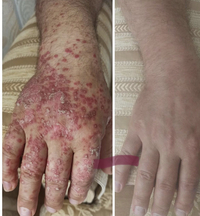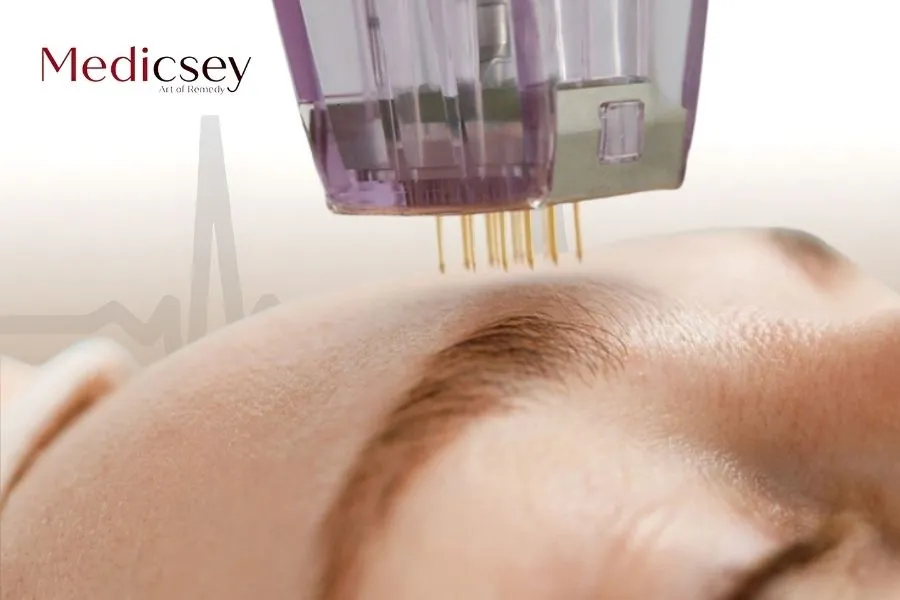Many women develop uterine fibroids at some point in their lives. But you may not realize that she has fibroids because they don't cause any symptoms. Your doctor may discover these fibroids by chance during a pelvic exam or an ultrasound during pregnancy.
Table of Contents
What are fibroids?
They are uterine tumors consisting of a group of muscles, tissues, and cells, usually in the form of a slow-growing benign tumor, with a low probability of becoming cancerous. However, because fibroids can grow in different areas of the uterus. They can cause varying degrees of pelvic discomfort, cramps, and abdominal pain. Fibroids are common in women of childbearing age.
Types of fibroids
Uterine fibroids, depending on the location of the uterine fibroid, can be classified as follows:
Subserous fibroids: They are the most common type of non-cancerous tumor. They are located on the outer lining of the uterus and fix themselves directly on the wall of the uterus or through the capillaries.
- Intrawall fibroids: grow between the muscles of the uterus and can reach a large size if left untreated.
- Submucosal fibroids: Fibroids grow under the mucous membrane in the inner layers of the uterus and are also found inside the uterine cavity. It can reach a size that can clog the fallopian tubes. This makes it difficult for sperm to fertilize the egg, impeding fertility and failing to conceive.
- Marketed fibroids can occur inside or outside the uterus. These fibroids get their name from the stick-like growth (peduncle) that connects them to the inner or outer wall of the uterus.
Causes of fibroids
Uterine fibroids grow from the smooth muscle tissue in the uterus due to the division of one of its cells in an uncontrolled way, which leads to the formation of a solid mass different from its surroundings. The occurrence of these tumors is related to a set of factors:
- Genetic mutations
In many cases of fibroids, genetic mutations have been diagnosed, especially in the areas responsible for converting cells into uterine muscle cells.
- Hormones
The hormones estrogen and progesterone are the hormones responsible for preparing the uterus for pregnancy. A link has been found between the appearance of uterine fibroids and these hormones. The levels of estrogen and its receptors were very high in affected women compared to healthy women.
- Family history
It has been shown that women diagnosed with this disease when one of their relatives is more likely to develop fibroids.
- Ethnicity
Black women have also been shown to be more likely to develop the disease. Fibroids were shown to be larger and appeared at an earlier age in these women.
Symptoms of fibroids
In general, women do not suffer from the symptoms of uterine fibroid, but in some cases, some women may suffer from a set of symptoms, most notably:
- Heavy bleeding during the menstrual period lasts for a week.
- Compression and pain in the pelvic area.
- Frequency of urination.
- Difficulties in emptying the bladder completely.
- Constipation.
- Back pain.
A person with fibroid rarely feels sharp pain. But if such pain occurs, it means that the tumor has begun to swell and grow increasingly to the point where there is no longer enough blood. This leads to a state of local cell death called gangrene.
These dead cells secrete substances in their vicinity, which lead to a high temperature and pain.
Complications of fibroids
In general, uterine fibroids are not dangerous, but they may lead to a number of complications, most notably:
- Anemia: if it causes heavy bleeding.
- Reducing the chance of pregnancy: preventing semen from the cervix from entering the fallopian tube and thus not achieving pregnancy.
- Premature birth: Large fibroids may render the physical position of the fetus inside the uterus unhealthy and cause premature birth.
- Distortion of the shape of the uterus: It is possible to increase its size significantly until it reaches the diaphragm.
Diagnosis of fibroids in Turkey
The diagnosis with fibroids can be confirmed in the following ways:
Ultrasound examination through the abdominal wall or through the vagina. But in the event that the tumor cannot be detected clearly, the following methods can be resorted to:
- Hysteroscopy.
- Computed tomography of the uterus.
- Magnetic resonance imaging of the uterus.
In some cases, different symptoms help to discover the location of the fibroid, as:
- Fibroids located inside the uterine cavity cause severe menstrual bleeding that lasts for a long time.
- Fibroids outside the uterine cavity lead to other symptoms as a result of the pressure these tumors cause on the organs in the abdominal cavity near the uterus.
When to see a doctor
See your doctor if you have one of the following signs:
- Pelvic pain that does not go away.
- Heavy menstrual cycles or for a long time or painful.
- bleeding between menstrual cycles.
- Difficulty emptying the bladder.
- Anemia.
The relationship between fibroids and pregnancy
Most women during their childbearing years have fibroids, often benign. In addition, fibroids do not affect the ability to conceive or fertility. But submucosal fibroids that reach large sizes on the inner lining of the uterus can lead to blockage of the fallopian tubes or miscarriage. They can also increase the risk of placental abruption, fetal stunts, premature birth, and other pregnancy complications.
Treatment of fibroids in Turkey
Fibroids are most common in women during their reproductive years. Fibroids usually shrink on their own when they reach menopause. However, based on symptoms, age, size, and number of fibroids. Your doctor may recommend one or more of the following treatment options:
- Drug therapy: The doctor may prescribe drug therapy to reduce the level of estrogen in the blood to reduce the size of the fibroid. This is usually prescribed as the first step of treatment in women to have the fibroid removed.
- Uterine fibroids: It is a radiation procedure that blocks blood flow, depriving the fibroid of the nutrients it needs to grow.
- Surgery: The patient may be advised to undergo surgery when symptoms are severe and hormone and drug treatment options have not worked, and some surgical procedures include:
Hysterectomy: This is usually a last resort when other treatment pathways are unsuccessful. This is because hysterectomy removes the entire uterus. It is often only recommended as a treatment for patients who have severe symptoms, are not planning a pregnancy, or have reached menopause.
Fibroid resection: It is an alternative procedure to a hysterectomy and is recommended for women who have a desire to become pregnant. The fibroid is removed from the inner uterine wall depending on the size and location of the fibroids. Your doctor may recommend laparoscopic or open abdominal surgery.
Laparoscopic hysterectomy is a minimally invasive procedure to treat submucosal fibroids guided by a thin telescope inserted into the uterus through the vagina. It can be performed using general or local anesthesia and requires little recovery time. In a hysterectomy, the hysteroscope must be inserted several times, and the patient can feel discomfort and abdominal cramps for several hours.
Laparoscopic uterine cutting: This procedure uses a specially designed instrument called a murcilator to remove fibroids. It differs from laparoscopic hysterectomy in that the hysteroscope must be inserted through the cervix once.
cost of treatment fibroids in Turkey
Turkey has a very high level of extensive experience of its doctors, the infrastructure of its hospitals, and the medical services it provides. In addition, their prices are very low in the treatment of fibroids compared to other countries.
Prevention of fibroids
To date, the means used for the prevention of uterine fibroids are not known. Although there are alternative therapies and diets that may be contributing factors, their effectiveness has not yet been proven.
Taking birth control pills, pregnancy, and childbirth have also been shown to be preventive methods that protect against the risk of uterine fibroids.
In conclusion, we learned about uterine abnormalities in Turkey and how to treat them. For more information, you can reach out to Medicsey and request a free and instant consultation on WhatsApp from the best gynecologist in Istanbul, Prof. Dr. Sona Özdemir.
read more: IVF Tube Baby









.webp)


.webp)


.webp)